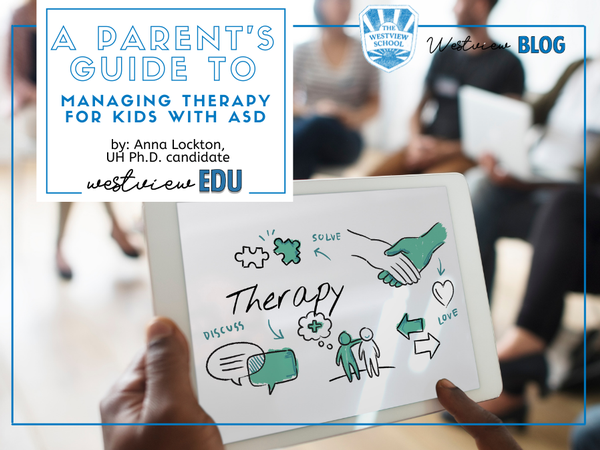
A Parent's Guide to Managing Therapy for Kids with ASD

There are many factors to consider when determining interventions and support for children with autism spectrum disorders (ASD). What works best? How often should we go? How many hours do we devote to this? What behavior or symptom do we target? Who provides this service? The list of questions is lengthy and can feel overwhelming. Here is a concise list of things to take in consideration as we determine the best supports for our children.
It Takes a Village
When it comes to therapy choices for your child, you don't have to make all these decisions on your own. One of the benefits of having multiple providers is that you can develop a treatment team. A treatment team is usually made up of the various providers working with your child. This may include their therapists, teachers, doctors, caregivers, and the individual themselves. Having a team of people on the same page regarding goals and treatment for your child helps immensely when deciding what approach to take, whether treatment is working, and what steps should be taken next.
No One Size Fits All
Because ASD is a heterogeneous disorder, it is challenging (if not impossible) to make blanket statements about what works best. We know from decades of research that behavioral interventions are often beneficial for individuals with ASD. Behavioral intervention is a broad category, though, and the delivery and duration of services may look quite different. When selecting an intervention, it is essential to remember that your provider should be able to explain why they are using a particular therapeutic approach with your child, what precisely they are targeting, and how data drives their decision-making.
When Needs Change, Therapies Should Too
When it comes to interventions or therapies and ASD, we often spend a lot of time talking about applied behavior analysis or ABA and social skills. But children often need other services like speech therapy, occupational therapy, and physical therapy. Sometimes we also need to develop skills to benefit from other interventions. For example, if our child has difficulty with behavior regulation or attending skills, they may not be ready for a group social skills program. We also tend to focus on early identification and intervention. Still, as children get older, priorities may change. There are other co-occurring conditions that families should be aware of, as these diagnoses may also require treatment or intervention. For example, many children and adolescents with ASD experience anxiety and/or depression. In this case, we may want to find a therapist with experience providing interventions like cognitive behavioral therapy (CBT) with modifications for ASD.
Ask an Expert About Medications
It is helpful to remember that sometimes individuals may need medication in addition to therapy. At this time, there are no FDA-approved medications that treat the core features of ASD. However, approved medications can address symptoms like irritability, anxiety, depression, hyperactivity, sleep, etc. Decisions about medication can be complex and multifaceted. Medication is something families can discuss with their child's treatment team. Having multiple sources of input can help inform families and prescribers on the effects of medication. And just like with other forms of treatment, baseline and ongoing data collection should be an important component of decision-making with medication.
In summary, there are many different approaches to treatment for children with ASD. As children get older, our approach to treatment may change better to meet the needs of the individual and their family. Treatment may need to address other mental and behavioral health issues and ASD. There is no absolute or set plan to follow for treatment or intervention for individuals with ASD. And because there are so many options and choices, making decisions can feel overwhelming. Focusing on treatments with solid evidence can help guide families during these times. Communication with your child's treatment team can also help facilitate decision-making.
--
Anna Laakman is currently a third-year doctoral student in School Psychology at the University of Houston. She is originally from Little Rock, Arkansas, but returned to Houston from Southern California, where she worked at the Center for Autism & Neurodevelopmental Disorders at the University of California-Irvine as the Education and Training Director. Her B.A. is in Communication and Sociology from Wake Forest University in North Carolina. She also holds a master's degree in Special Education with a focus in Autism Spectrum Disorders from the University of Missouri-Columbia. Her previous work experience includes work at the University of Missouri Thompson Center for Autism and Neurodevelopmental Disorders in diagnostic evaluations, research, and training and education. Additionally, Anna previously worked at Texas Children's Hospital on the Simons Variation in Individuals Project. Her current research interests are in camouflaging in ASD and the female phenotype of autism.
This blog post was adapted from the presentation given during WestviewEDU on Thursday, November 4, 2021. WestviewEDU is an education series presented by The Westview School for parents and caregivers of children with autism spectrum disorder. For a full list of WestviewEDU sessions for 2021/2022 academic calendar year, visit The Westview School online.
